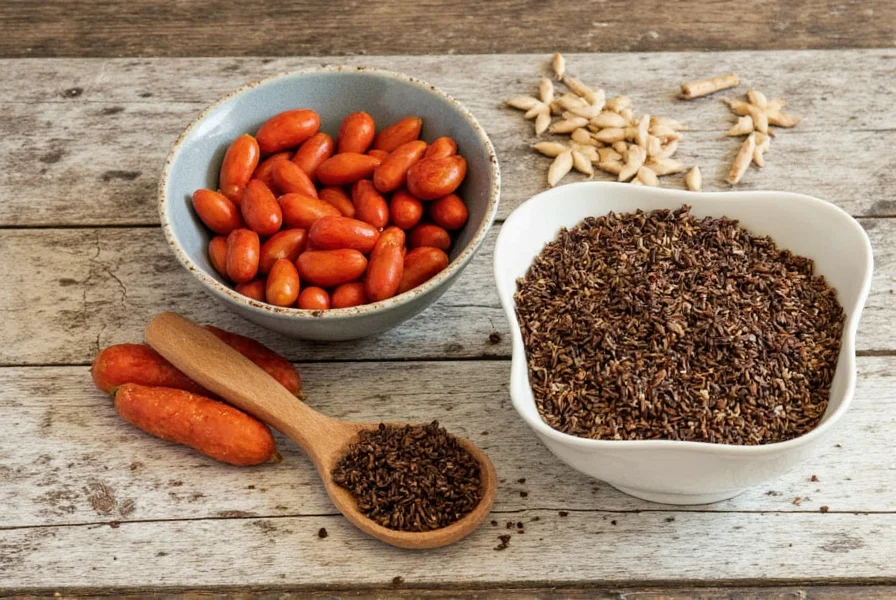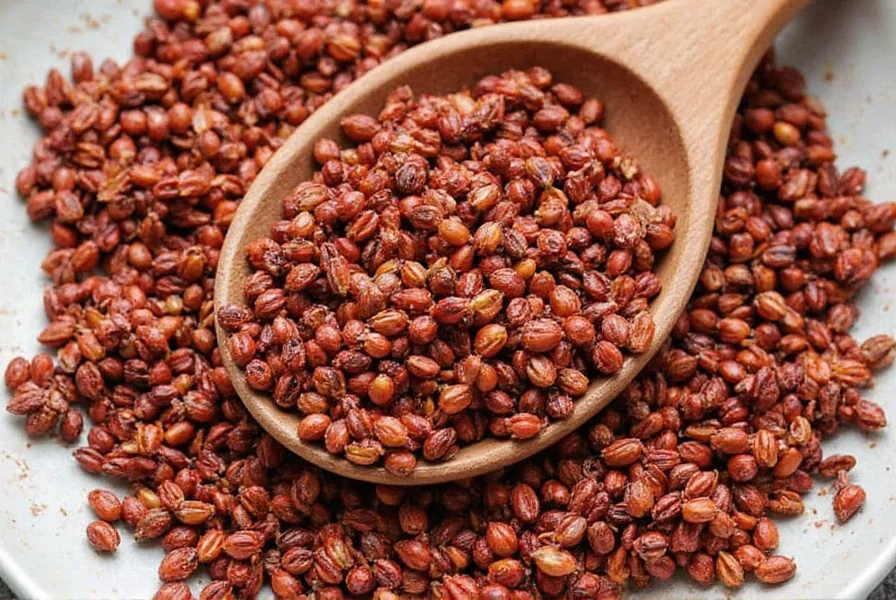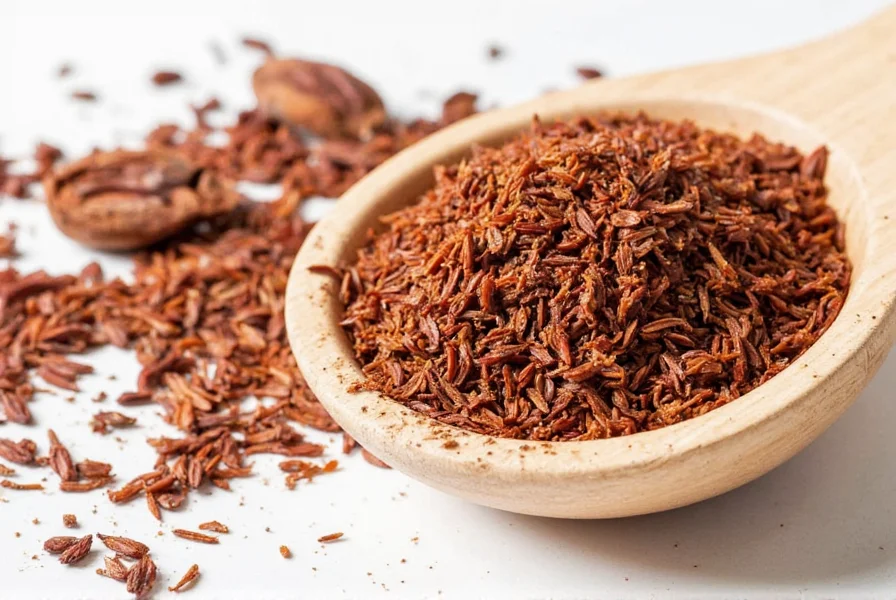If you're preparing a Vietnamese pho or Chinese braised dish and realize you're out of star anise, don't panic. This distinctive spice with its sweet licorice flavor is essential in many Asian cuisines, but several effective alternatives can save your recipe. Understanding proper substitution ratios and flavor profiles ensures your dish maintains authentic taste without compromising quality.
Understanding Star Anise and Its Unique Flavor Profile
Star anise (Illicium verum) is the star-shaped fruit of a small evergreen tree native to China and Vietnam. Its primary flavor compound, anethole, gives it that characteristic licorice-like taste similar to anise and fennel but with more complex woody and spicy notes. When whole, one star anise measures approximately 1-2 inches across and imparts flavor gradually during long cooking processes.
Unlike regular anise (which comes from a different plant family), star anise maintains its flavor integrity during extended cooking times, making it indispensable in dishes like pho broth, Chinese five-spice powder, and Indian garam masala. When seeking a star anise replacement, consider both the flavor profile and how your recipe uses the spice—whether for quick infusions or slow braising.
Top 6 Star Anise Substitutes Ranked by Effectiveness
| Substitute | Flavor Match | Best For | Substitution Ratio |
|---|---|---|---|
| Chinese Five-Spice Powder | ★★★★☆ | Stir-fries, marinades, roasted meats | ½ tsp per star anise |
| Anise Seeds | ★★★☆☆ | Baking, syrups, quick infusions | ¼ tsp ground per star |
| Fennel Seeds + Cloves | ★★★☆☆ | Pho broth, braised dishes | ⅛ tsp fennel + 1 clove per star |
| Allspice | ★★☆☆☆ | Stews, hearty dishes | ⅛ tsp per star anise |
| Cinnamon + Cloves | ★★☆☆☆ | Meat dishes, soups | ¼ tsp cinnamon + 1 clove per star |
| Licorice Root | ★★★★☆ | Teas, medicinal broths | ½ inch piece per star |
Detailed Analysis of Each Star Anise Alternative
Chinese Five-Spice Powder: The Most Versatile Option
When searching for a star anise replacement in Chinese cooking, five-spice powder offers the most authentic alternative since star anise is actually one of its primary ingredients (typically comprising 40-50% of the blend). This pre-mixed spice contains star anise, cloves, Chinese cinnamon, Sichuan pepper, and fennel seeds.
How to use: Replace one whole star anise with ½ teaspoon of five-spice powder. For dishes where star anise is the dominant flavor (like red-cooked pork), reduce other spices in your recipe to prevent flavor imbalance. This substitution works particularly well for star anise substitute in pho when combined with additional cinnamon.
Anise Seeds: Closest Flavor Match
Anise seeds come from a completely different plant (Pimpinella anisum) than star anise but share the same primary flavor compound, anethole. They provide the most direct flavor match but lack star anise's subtle woody notes.
Critical tip: Use ¼ teaspoon of ground anise seed per whole star anise. Whole seeds require grinding for proper flavor release. Be cautious with quantities—excess anise seed can create an overpowering medicinal flavor. This is your best non-alcoholic star anise substitute for baking applications like biscotti or pain d'épices.

Fennel Seeds and Cloves Combination
For those needing a star anise alternative for braised dishes, combine fennel seeds (which provide the licorice note) with cloves (adding warmth and depth). This pairing mimics star anise's complex profile better than single-ingredient substitutes.
Perfect ratio: Use ⅛ teaspoon ground fennel seeds plus one whole clove per star anise called for in your recipe. This combination works exceptionally well in pho broth and Chinese master stock. The fennel provides the sweet anise flavor while cloves contribute the subtle spiciness missing in pure anise substitutes.
Specialized Substitutions by Cuisine
Vietnamese Pho Broth Solutions
When making pho without star anise, use this chef-recommended blend: 1 cinnamon stick, 4 cloves, and 1 teaspoon fennel seeds per 8 cups of broth. Toast the spices lightly before adding to hot water. While not identical, this combination preserves the essential aromatic profile. Many authentic pho recipes actually use this blend alongside star anise, making it a legitimate star anise substitute for pho when necessary.
Chinese Braised Dishes
For red-cooked dishes like dongpo pork, replace each star anise with ¼ teaspoon five-spice powder plus a small piece of cassia bark. The cassia provides the missing woody note that distinguishes Chinese cinnamon from regular cinnamon. This approach maintains the complex spice layering essential to Chinese cooking without star anise.
Baking Applications
In baked goods like gingerbread or spice cakes, use ⅛ teaspoon anise extract diluted in 1 teaspoon of liquid per star anise required. Alternatively, increase other warm spices (cinnamon, allspice) by 25% while adding ⅛ teaspoon fennel pollen. This creates a balanced star anise substitute for baking without overwhelming licorice flavor.

Common Substitution Mistakes to Avoid
Many home cooks make these critical errors when seeking a star anise replacement:
- Using too much anise seed - Its flavor concentrates differently than star anise
- Adding substitutes at the wrong cooking stage - Whole star anise infuses slowly; ground substitutes work faster
- Ignoring dish-specific requirements - Pho needs different substitutes than baked goods
- Not adjusting other spices - Compensate for missing flavor dimensions
Remember that star anise substitute ratios aren't one-to-one. Whole star anise releases flavor gradually during long cooking, while ground alternatives deliver immediate impact. For slow-cooked dishes, add ground substitutes during the last 30 minutes of cooking to prevent flavor degradation.
When No Substitute Will Suffice
Some dishes absolutely require authentic star anise. These include:
- Authentic Chinese master stock (takes years to develop)
- Traditional mulled wine recipes
- Certain medicinal herbal preparations
- Specific regional pho variations from Northern Vietnam
In these cases, consider making a quick trip to an Asian grocery store where star anise sells for approximately $3-4 per ounce and keeps indefinitely in an airtight container. Properly stored, whole star anise maintains potency for 2-3 years.
Frequently Asked Questions
Can I use regular anise instead of star anise in pho?
Yes, but with adjustments. Use ¼ teaspoon ground anise seed per star anise called for, but add one extra clove and ½ inch cinnamon stick to compensate for missing flavor dimensions. Add the anise during the last 20 minutes of broth simmering since it releases flavor faster than whole star anise.
What's the best star anise substitute for someone allergic to licorice?
For licorice allergies, avoid anise and fennel. Use a blend of ⅛ teaspoon allspice plus ¼ teaspoon cinnamon per star anise. This provides warmth without anethole compounds. In pho broth, increase ginger and black pepper to maintain complexity. This creates a safe star anise alternative for allergic individuals while preserving essential flavor balance.
How much ground star anise equals one whole star?
One whole star anise equals approximately ½ teaspoon ground star anise. However, grinding changes flavor release dynamics—ground spice delivers immediate impact while whole stars infuse gradually. For slow-cooked dishes, use ⅓ teaspoon ground star anise and add it during the last 30 minutes of cooking to prevent flavor degradation.
Can I make my own star anise substitute blend?
Yes, create a homemade blend with 2 parts fennel seeds, 1 part cloves, and ½ part allspice. Toast lightly, then grind. Use ½ teaspoon of this blend per star anise required. For Chinese dishes, add a pinch of Szechuan pepper. This versatile mixture works as an effective star anise replacement across multiple cuisines when stored in an airtight container.
Why does my star anise substitute taste medicinal?
Overpowering medicinal flavor typically means you've used too much anise or fennel. Reduce the amount by 30-50% and balance with warm spices like cinnamon or cardamom. Remember that star anise's flavor is more nuanced than pure anise—the woody, earthy notes get lost in single-ingredient substitutes. Add a bay leaf or small piece of citrus zest to round out harsh flavors in your star anise alternative.











 浙公网安备
33010002000092号
浙公网安备
33010002000092号 浙B2-20120091-4
浙B2-20120091-4